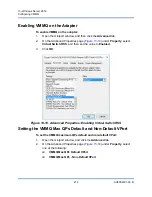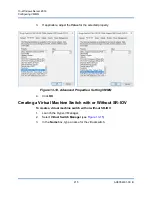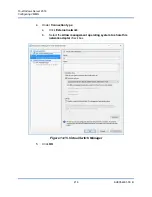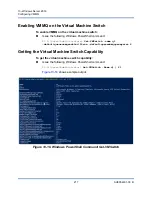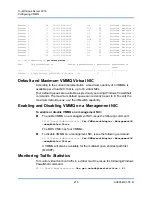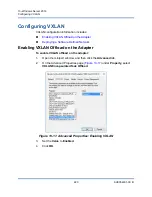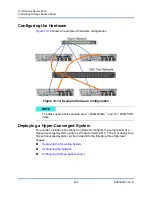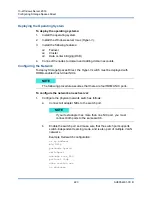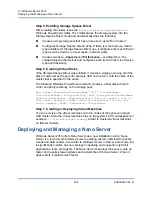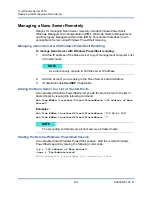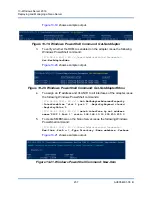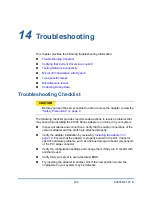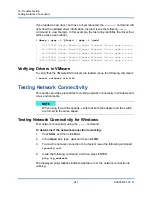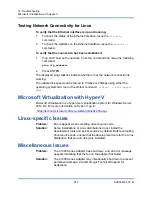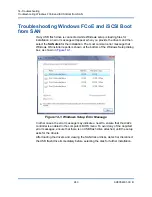
13–Windows Server 2016
Deploying and Managing a Nano Server
228
AH0054601-00 B
Step 5. Enabling Storage Spaces Direct
After creating the cluster, issue the
Enable-ClusterStorageSpacesDirect
Windows PowerShell cmdlet. The cmdlet places the storage system into the
Storage Spaces Direct mode and automatically does the following:
Creates a single large pool that has a name such as
S2D on Cluster1
.
Configures Storage Spaces Direct cache. If there is more than one media
type available for Storage Spaces Direct use, it configures the most efficient
type as cache devices (in most cases, read and write).
Creates two tiers—
Capacity
and
Performance
—as default tiers. The
cmdlet analyzes the devices and configures each tier with the mix of device
types and resiliency.
Step 6. Creating Virtual Disks
If the Storage Spaces Direct was enabled, it creates a single pool using all of the
disks. It also names the pool (for example
S2D on Cluster1
), with the name of the
cluster that is specified in the name.
The following Windows PowerShell command creates a virtual disk with both
mirror and parity resiliency on the storage pool:
New-Volume -StoragePoolFriendlyName "S2D*" -FriendlyName
<VirtualDiskName> -FileSystem CSVFS_ReFS -StorageTierfriendlyNames
Capacity,Performance -StorageTierSizes <Size of capacity tier in
size units, example: 800GB>, <Size of Performance tier in size
units, example: 80GB> -CimSession <ClusterName>
Step 7. Creating or Deploying Virtual Machines
You can provision the virtual machines onto the nodes of the hyper-converged
S2D cluster. Store the virtual machine’s files on the system’s CSV namespace (for
example,
c:\ClusterStorage\Volume1
), similar to clustered virtual machines
on failover clusters.
Deploying and Managing a Nano Server
Windows Server 2016 offers Nano Server as a new installation option. Nano
Server is a remotely administered server operating system optimized for private
clouds and data centers. It is similar to Windows Server in Server Core mode, but
is significantly smaller, has no local logon capability, and supports only 64-bit
applications, tools, and agents. The Nano Server takes less disk space, sets up
faster, and requires fewer updates and restarts than Windows Server. When it
does restart, it restarts much faster.

